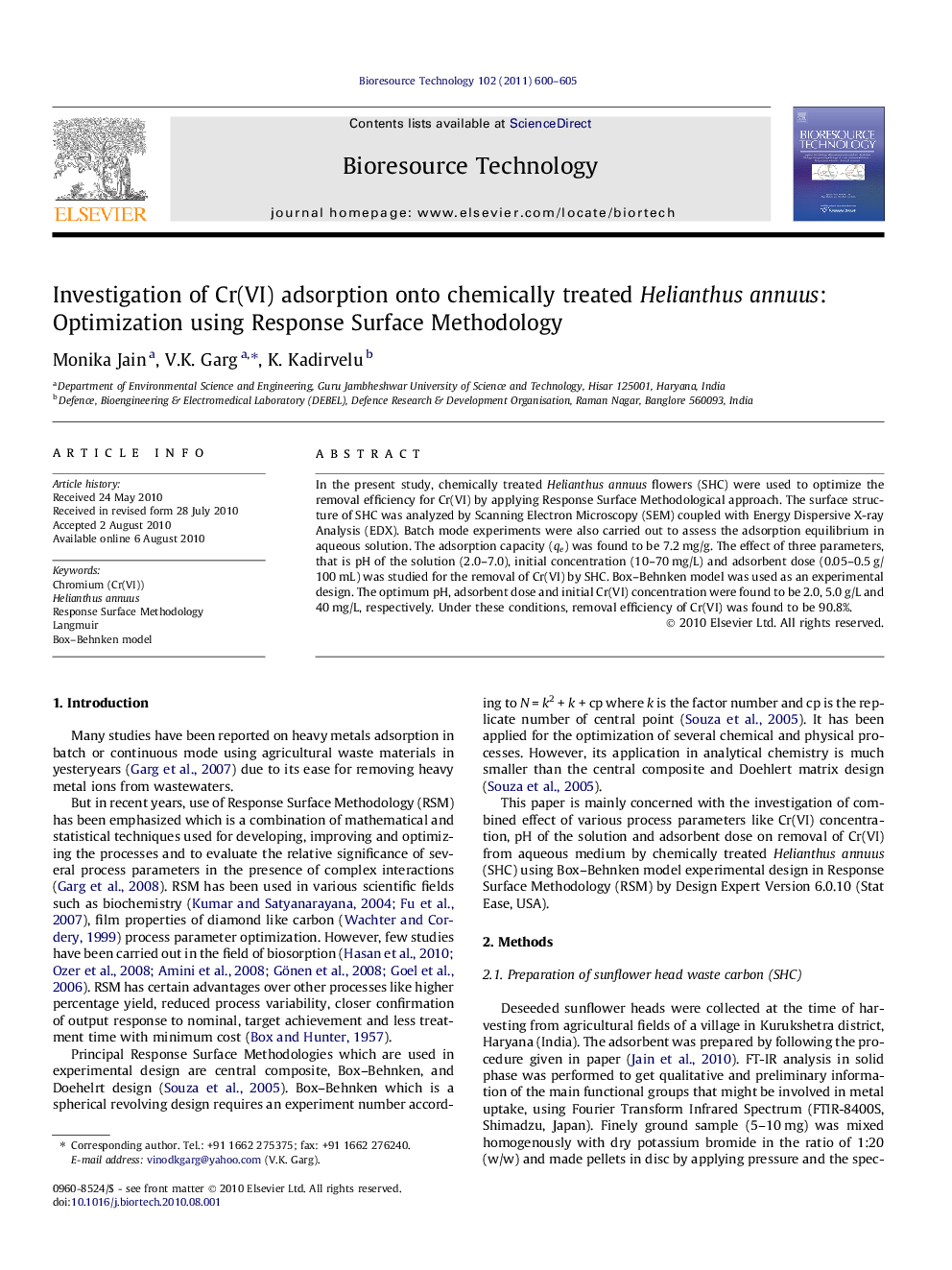| Article ID | Journal | Published Year | Pages | File Type |
|---|---|---|---|---|
| 682270 | Bioresource Technology | 2011 | 6 Pages |
In the present study, chemically treated Helianthus annuus flowers (SHC) were used to optimize the removal efficiency for Cr(VI) by applying Response Surface Methodological approach. The surface structure of SHC was analyzed by Scanning Electron Microscopy (SEM) coupled with Energy Dispersive X-ray Analysis (EDX). Batch mode experiments were also carried out to assess the adsorption equilibrium in aqueous solution. The adsorption capacity (qe) was found to be 7.2 mg/g. The effect of three parameters, that is pH of the solution (2.0–7.0), initial concentration (10–70 mg/L) and adsorbent dose (0.05–0.5 g/100 mL) was studied for the removal of Cr(VI) by SHC. Box–Behnken model was used as an experimental design. The optimum pH, adsorbent dose and initial Cr(VI) concentration were found to be 2.0, 5.0 g/L and 40 mg/L, respectively. Under these conditions, removal efficiency of Cr(VI) was found to be 90.8%.
